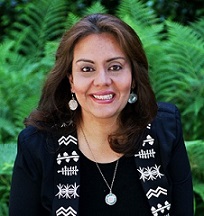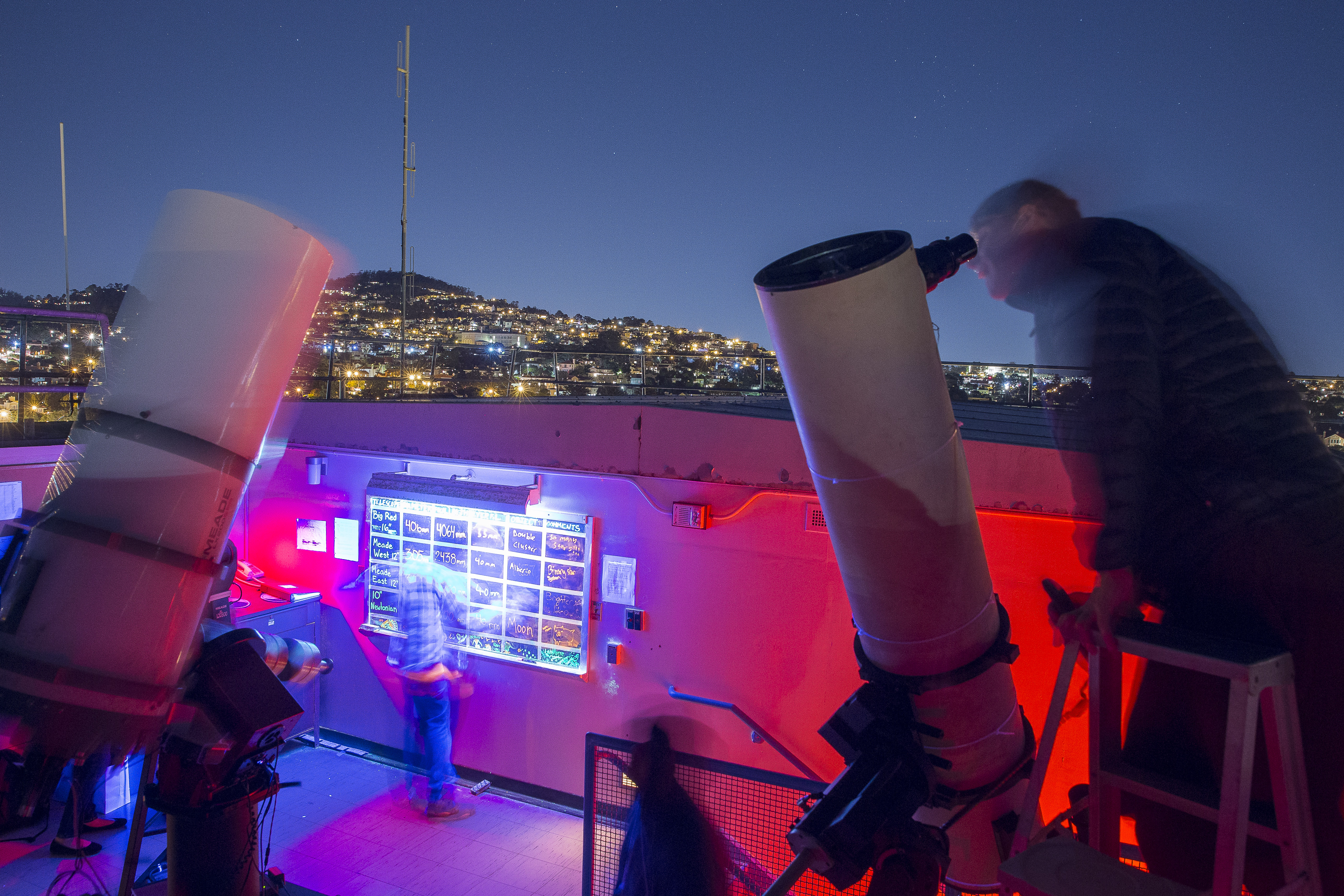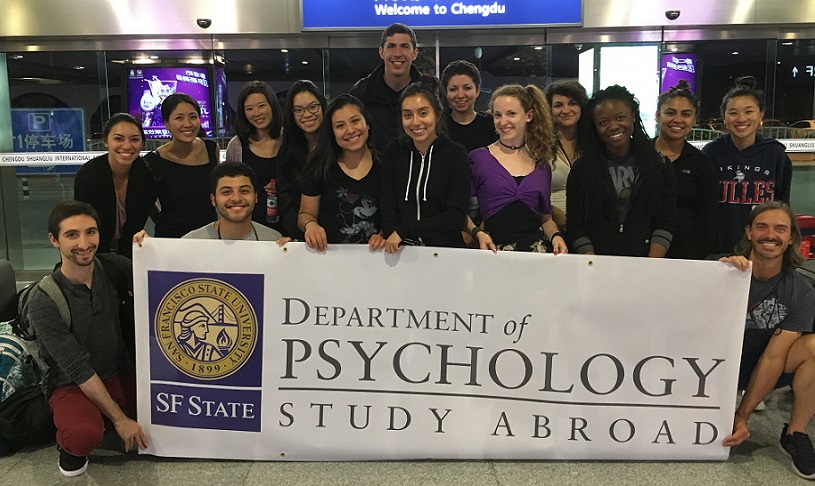
Community-Engaged Research Project Evaluates Health Benefits of Exercise in Nature
SF State alum and post-baccalaureate UCSF clinical research coordinator, Edgar Velazquez, grew up in the Tenderloin and experienced first-hand the repercussions of social, economic, and environmental disparities, as well as the limitations of the health care system. This experience was frustrating, but it motivated him to do something about it. As complex as the issues were, Edgar still found a way to bring about transformational change through a community engaged research project with SF BUILD (Building Infrastructure Leading to Diversity), a $17 million National Institute of Health-funded project led by SF State in partnership with UCSF. Promoting Activity and Stress-Reduction in The Outdoors (PASITO, translates to “little step” in Spanish) was a community-engaged project where he and his team evaluated the health benefits of exercise in nature over a 3-month period.
In order to achieve transformational change, they developed a strategic partnership with the Latina Center, a community-based organization in Richmond, CA, and the East Bay Regional Parks District. They also diversified their research team to include culturally congruent researchers, some of whom had an innate trust and understanding of the social norms and values within the community as they were raised a few blocks away from the Latina Center. Velazquez states, “Our close partnership with the community organization, as well as having ‘insider researchers,’ who came from the community being affected, resulted in more rigorous and effective research”. The success of this research in supporting community efforts is demonstrated through the Latina Center using the results of the PASITO study to advocate for safer sidewalks and more parks in their neighborhood to increase community exercise opportunities. This is the transformational change community-engaged research can lead to!
Edgar presented his research at a faculty networking event called “In the Mix 2019”, a cross-institutional collaboration between UCSF and SF State. The theme for this particular 4th annual event revolved around Community-Engaged Research. Edgar and ICCE Faculty Director, Dr. Nina Roberts, had the opportunity to speak about what community-engaged research is, why it's important, and to give examples of how they've successfully engaged communities in research. Faculty and staff in attendance expressed great appreciation for their presentations.
As for his future plans, Velazquez will be starting medical school this summer, 2019, at UC Davis. His goal is to be a community physician that understands the assets, struggles, and values of his community and contributes to bridging the gap between academic research, health policy, and medical practice to improve public health. ICCE wishes him the best of luck.

ICCE has been thrilled to work with Dr. Leticia Márquez-Magaña, professor of Cell and Molecular Biology in the College of Science & Engineering. Dr. Márquez-Magaña is also the Director of the Health Equity Research Lab where she works collaboratively with staff on research projects aimed on "Linking Basic Science to Community Health." This work is informed by her affiliation with the Health Equity Institute at SF State since 2007, and her leadership of the SF BUILD project since 2014. We asked Leti to provide us with a few personal/professional reflections of her experience as an ICCE Faculty Fellow, and her story follows:
My experience as the spring 2019 ICCE Faculty Fellow has taken me back to my undergraduate confusion as a STEM major absolutely committed to giving back. At that time, my commitment to giving back was fortified by Cesár Chávez’ words when he visited my campus. He told us “We cannot seek achievement for ourselves and forget about progress and prosperity for our community.” However, my research mentor at Stanford University told me to “keep the science pure, and free of sociopolitical implications.” Taken together these words from two individuals I greatly admired, which I perceived at being at a cross-roads with different purposes, led to great confusion about how I could link my STEM major to direct community benefit. Unable to address this confusion, I came to a false conclusion that rigorous scientific research could not be linked to community service. Consequently, I pursued them independently well into my professorate. Over the years and in a variety of ways, especially since being an ICCE Faculty Fellow, that confusion has been resolved!
I wholeheartedly understand that rigorous scientific research can be readily linked to community service, for example, through the pursuit of real-life, community-relevant research questions. This is the understanding I aimed to share with research faculty in the College of Science and Engineering when I organized a Community Service Learning (CSL) workshop on April 2nd in honor of Cesár Chávez’ holiday. Unfortunately, it was poorly attended, and only female faculty of color came to the workshop. This result was not unexpected given that multiple studies show women and minorities pursue science for altruistic reasons more than their male, non-minority counterparts. Nonetheless, it was disappointing, necessitating that I use more strategic approaches to get the word out about CSL as a high-impact practice in STEM.

A recently completed, half-million-dollar Keck STEM Service-Learning Study across the CSU system found that incorporating service-learning in STEM increased the 6-year graduation rate for underrepresented minorities (URM). Analysis of graduation rates for the 2011 cohort found that the 6-year graduation rate for URM students enrolled in STEM courses lacking service-learning was 52% and rose to 74% when service-learning was incorporated. The 6-year graduate rates for non-URM enrolled in STEM courses with (87%) and without (86%) service-learning were higher than URM rates but were not significantly different from one another. These results support the well-known facts that service-learning is a high impact practice in the CSU, including STEM fields. Additionally, it can be concluded that its use can decrease the educational disparity found for URM and non-URM in STEM.
I know, that as a former undergraduate in STEM, I would have felt a greater sense of belonging in a STEM major that affirmed my values to give back to my communities instead of endorsing what can be considered “ivory tower” science. As an ICCE Faculty Fellow, I’ve learned a lot about, and contributed to, advancing service-learning in my college, and will continue to do so. Furthermore, my hope is to increase that sense of belonging for STEM majors who are absolutely committed to giving back as well as educating others who may be “confused” like I was, to learn about the life-long benefits of doing this important work.

ICCE, in collaboration with the College of Science & Engineering and Dept. of Recreation, Parks, & Tourism, hosted an Information Session on Nov. 7th, showcasing SF State ’s Sierra Nevada Field Campus (SNFC). Watch this 1-minute promo video! Faculty, staff, and students via coursework and research have an extraordinary opportunity for experiential learning in one of the Sierra Mountain finest field schools. One research project launched in 2017 is the Clover Valley Ranch Meadow Restoration Project. The SF State Institute for Geographic Information Science enjoys collaborating with the Sierra Fund in partnership with our Geography & Environment and Biology departments. Unique research on “geospatial data storage and documentation supporting greenhouse gas benefit monitoring” has been occurring for this important restoration project. Faculty and students involved use the university’s Field Campus as a base-camp while gaining many hands-on skills including data collection and analysis, management planning, collaboration, and outreach and education; those involved work diligently “to improve water availability, reliability, and quantity, facilitate the restoration and resilience of native and culturally relevant high elevation wet meadow vegetation assemblages, and increase habitat integrity and availability.”
The College of Science & Engineering has many other connections relating to the Field Campus. Another of many-valued research studies taking place, for example, is testing new tools to help mitigate climate change. Dr. Jerry Davis, and other researchers, recently received funding for a five-year study! Worth reading is: “SF State Team Tests Surprising New Tools Slowing Climate Change.” Keep your eye out for a feature story being published in the Spring edition of the SF State Magazine. That particular story will discuss this project, and will also go more in-depth about the Sierra Nevada Field Campus and its remarkable history. The SNFC also has a wonderful “Wish List”, have a look, and see how you can help support. For more info to bring your class or conduct research, contact J.R. Blair at jrblair@sfsu.edu, 415-405-3280.

The Observatory: A Hidden Gem on Campus!
by Dr. Adrienne Cool
To find hidden treasure on the SF State campus, look no further than the roof of Thornton Hall, where you will find the SFSU Observatory nestled on the roof. When the Sun goes down (and skies are clear!) doors open to the campus community and members of the public. Managed by SF State student "docents," the Observatory houses four telescopes with which visitors can view the moon, planets, stars, galaxies, and more. Weather permitting, the Observatory is open three nights per week during both the fall and spring semesters; hours vary with the time of year. Seasonal highlights range from the rings of Saturn to the stellar nursery at the heart of Orion. Come see the moon magnified 100 times, where you will see craters "up close," much like what Apollo astronauts saw an hour before they landed!
Astronomy 115 and 116. Most commonly, students become docents after taking Astronomy 301, "Observational Astronomy Laboratory." Students who become docents take on significant responsibility, operating the telescopes, choosing targets, and sharing their enthusiasm for science and their knowledge of astronomy with visitors. Every semester, the thrice-weekly Observatory Open Nights enable hundreds of students in the GE course Astronomy 116 to view astronomical objects trillions of miles away with their own eyes. Docents-in-training apprentices to experienced student docents as they learn to use the telescopes and find their way around the night sky. Once trained, docents are eligible to receive a unit of credit (Astronomy 685, "Projects in the Teaching of Astronomy") for this service to the community. Curious to find out more? Contact us!
Professor Paik, Dept. of Psychology, continues local and international service-learning during covid-19 pandemic
January 13, 2022
How do you continue to foster community engagement and service-learning at a time when physical separation is being mandated? Jae Paik, a professor in the Department of Psychology, shows us how.
For the last five years, Paik has been actively supporting holistic approaches to education. This includes developing and implementing social and emotional learning (SEL) programs for early childhood and elementary school settings, as well as directing a community-based research lab called the Global Classroom. Despite the ongoing pandemic, she has continued to collaborate with members of the local and international school communities. In addition to providing service-learning experiences for her students, these are opportunities for them to help address the current educational challenges and needs in local and international communities.
The use of SEL programs has been increasing over the past 20 years. This is in response to research findings suggesting that SEL has positive and long-lasting impacts on school, work, and life success (e.g., Weissberg et al., 2015). The covid-19 pandemic has further heightened the need to build social and emotional skills to navigate ever-changing environments and life events. These essential skills include adaptability, emotional regulation, empathy, compassion, and resilience. Unfortunately, many schools and centers find it challenging to support SEL programs due to limited resources and funding.
Paik and her students are helping to bridge that gap locally and internationally. In the Bay Area this has included providing SEL programs in pre-K through second-grade classrooms; engaging in professional development and parent workshops; and facilitating community events that bring together SF State students, faculty, children, and families. During the past two years, Paik shifted the SEL programs online. SF State undergraduates were trained in SEL instruction through an online service-learning course, then provided an engaging 12-week SEL program to local PreK-second grade classrooms. More than 200 local elementary students received weekly, live online SEL lessons for 12 weeks, filled with activities designed to foster social and emotional skills specifically identified by their school leaders and teachers. One of Paik’s students commented, “This hands-on learning experience not only helped us as students but will benefit the children we impacted for a lifetime.”
Internationally, Paik’s students have the once-in-a-lifetime opportunity to provide educational and psychological field services abroad. Each summer she has led a group of students and faculty to China and South Korea, where they collaborate with local university students, educators, children, and their families. Through weaving together high-impact practices such as global learning, community-based learning, and collaborative projects, students gain new perspectives and life skills which may be challenging to obtain in a conventional classroom. Paik believes that such endeavors also promote international connectedness and partnerships among higher education institutions, which will, in turn, promote cutting-edge educational practices of benefit to children, teachers, and families worldwide. After being paused for the last two years due to the pandemic, Paik is excited to be bringing back the international service-learning program this summer 2022. A group of SF State Ambassadors – 19 students and four faculty – plan to travel to South Korea, where they will collaborate with local universities on educational, cultural, and outreach programs within their communities.
Paik commented that her most rewarding teaching experience has been to connect SF State students with local and global communities. She hopes to inspire her students to actively seek ways to serve those communities, as well as bring awareness to the positive impacts of service-learning and community-based research. She thanks Instructionally Related Advisory Board and Institute for Civic & Community Engagement for their continuous support in providing these invaluable learning experiences.
For more information, please visit the Global Classroom website. Jae Paik can be contacted via jaepaik@sfsu.edu or 415-338-1111, x5-0577.
References
Weissberg, R. P., Durlak, J. A., Domitrovich, C. E., & Gullotta, T. P. (2015). Social and emotional learning: Past, present, 930 and future. In J. A. Durlak, C. E. Domitrovich, R. P. Weissberg, & T. P. Gullotta (Eds.), Handbook of social and emotional learning: Research and practice (pp. 3–19). Guilford.
Dr. Jae Paik provides International Service Learning Experience in China
December 2018
Since 2017, Department of Psychology has been providing an exciting international service-learning program for their students. Under the leadership of Dr. Jae H. Paik, Professor, each summer a cohort of 14 undergraduates travel to Sichuan Province, China. They engage in various educational and psychological field services for local children, families, and teachers including transformative experiences for all involved. Prior to their trip, students complete a semester-long course; they learn to work as a team to deliver curricular and extracurricular activities in real-world service settings. For example, they teach in PreK-12 classrooms, mentor younger students, offer family cultural events, and conduct observational assessments of students.
During the 4-week trip, students are fully immersed in a social and cultural exchange while providing approximately 80 hours of fieldwork with pre-kindergarten through grade 12 students at schools in Chengdu, China. Students also take courses taught by local Psychology faculty designed to complement and further enrich their cultural and service-learning experiences. SFSU students stay on campus at major universities where they gain first-hand experience living and studying alongside Chinese undergraduates. As stated by Dr. Paik:
“Our students are enthralled by the richness of Chinese culture while taking Mandarin Chinese, calligraphy, paper cutting, and traditional instrument lessons as well as visiting the Giant Buddha, Panda Research and Breeding Center, museums, temples, and traditional towns. Through all the excitement and challenges of adapting to a new culture while living and collaborating with fellow classmates, our students gain new perspectives and valuable life and intercultural skills that may not be readily available in the traditional classrooms. Both quantitative and qualitative data analyses examining the positive impact the program has on our students and the local communities are well underway. Through continuous collaborations among faculty, student cohorts, and local communities, we hope to refine and improve in providing meaningful and cohesive experience for all.”
Dr. Paik would like to thank all their international collaborators and hosting institutions: International Institute for Chinese Education-Enhancement Research, Southwest University of Science and Technology, and Chengdu College of Arts and Sciences. For more information, please visit their Study Abroad information page and/or contact the Program Director, Dr. Jae H. Paik at jaepaik@sfsu.edu or x5-0577


